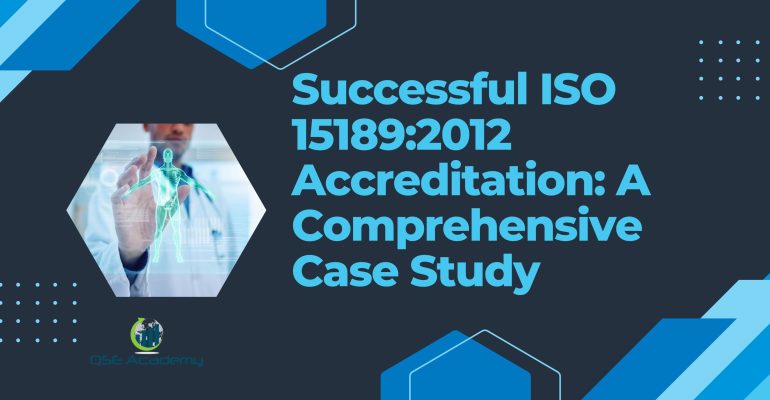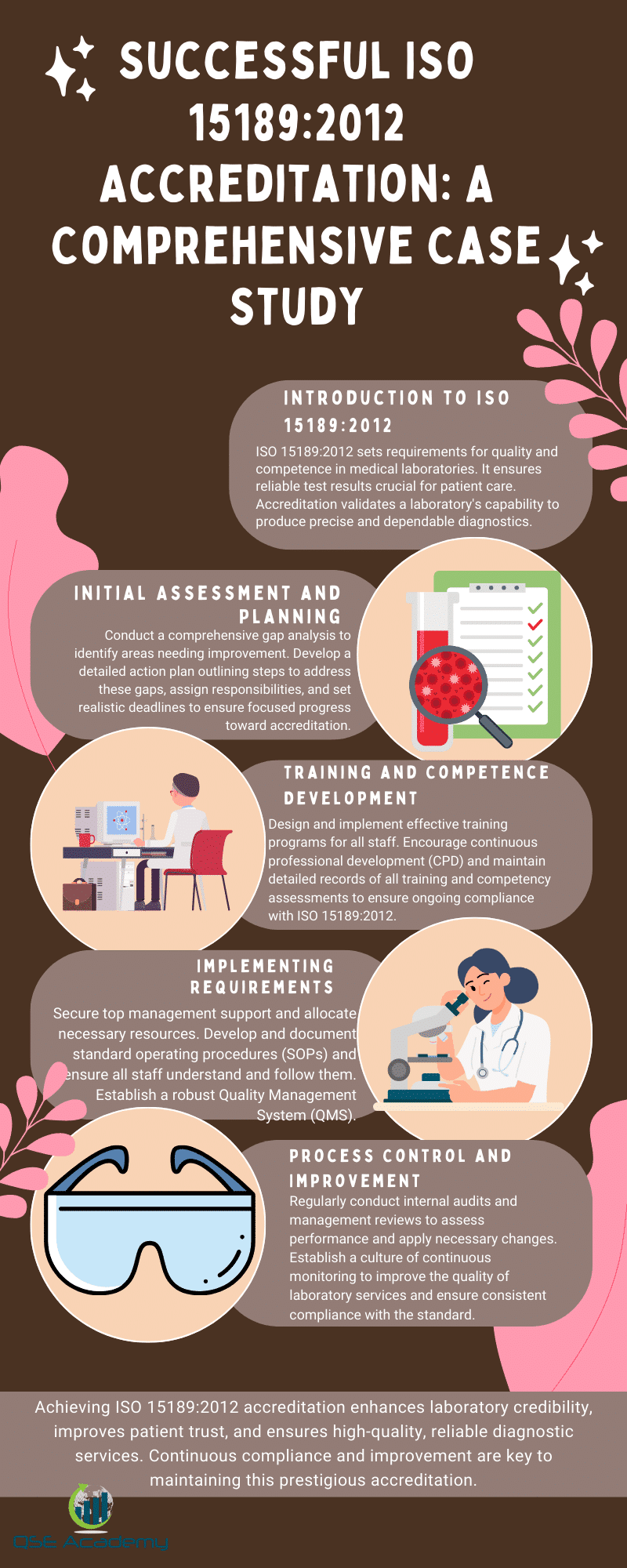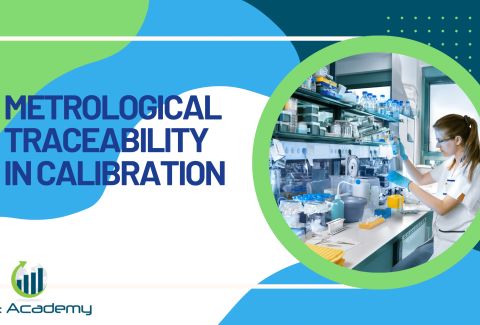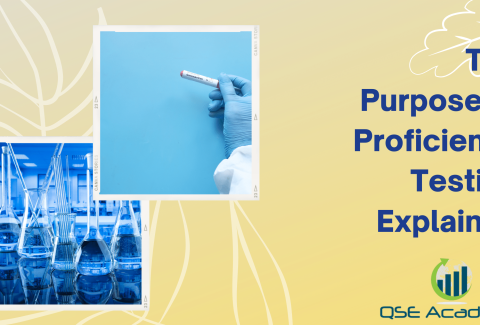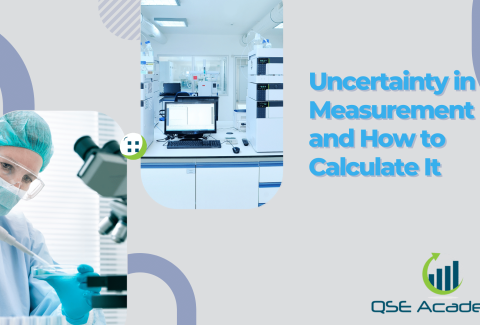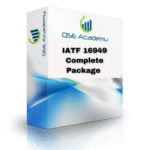Successful ISO 15189:2012 Accreditation: A Comprehensive Case Study
Quality can mean the difference between success and failure in the field of medical laboratory testing. The ISO 15189:2012 standard defines excellence in this realm, setting a benchmark for medical labs across the globe. In a healthcare landscape increasingly focused on reliability, achieving ISO 15189:2012 accreditation is a notable accomplishment for any laboratory.
The journey to accreditation is seldom simple or straightforward. Each laboratory’s path is paved with unique challenges, extensive preparation, and rigorous adherence to quality standards. This case study meticulously unfolds one such journey to successful ISO 15189:2012 accreditation, providing insights that can guide others in the quest for quality improvement.
Dive into the nuances of a fully operational case study about mastering the ISO accreditation process within a medical laboratory context. The following abstract gives us a peek into the laboratory’s background, the meticulous planning, the operational overhaul, and the resulting triumphs and hurdles faced when seeking ISO 15189:2012 accreditation.
Introduction
ISO 15189:2012 is a globally recognized standard specifically designed for clinical and medical laboratories. It provides requirements for quality and competence essential to ensure the consistent delivery of accurate and reliable test results, which are critical for patient care. The significance of ISO 15189:2012 lies in its comprehensive approach to standardizing all aspects of laboratory operations, including pre-analytical, analytical, and post-analytical processes.
Accreditation to this standard is important as it serves as a validation of a laboratory’s capability to produce precise and dependable diagnostic outcomes. This is crucial in healthcare, where the correct diagnosis is the cornerstone of effective treatment. Furthermore, an accredited laboratory reaffirms the trust among patients, healthcare providers, and regulatory bodies regarding the credibility of the test reports generated.
The standard has evolved since its inception to adapt to technological advancements and changing regulatory requirements. A brief history of ISO 15189 shows its first publication in 2003, with the most current version being reviewed and confirmed in 2012. This evolution marks a continual commitment to excellence and improved service delivery in the ever-progressing field of medical diagnostics.
- Pre-analytical, analytical, and post-analytical processes are the focus of ISO 15189:2012
- Trust, credibility, and accuracy are the core benefits of laboratory accreditation
- A commitment to excellence and service delivery underscores the standard’s evolution
Background of the Laboratory
The laboratory in focus is a medium-sized entity located in the heart of a bustling urban area, easily accessible to a diverse population seeking healthcare services. With a modern infrastructure, the laboratory extends a wide array of diagnostic and testing facilities, tailored to meet the needs of individual patients and healthcare providers. The scope of services encompasses routine blood tests, advanced biochemistry, immunology, hematology, microbiology, and cytogenetics, among others.
Prior to undertaking the journey towards ISO 15189:2012 accreditation, the laboratory operated efficiently but without the recognition of an international quality standard. The infrastructure and equipment required for an extensive range of tests were in place, and the staff was proficient, yet there was room for improvement in standardizing processes to enhance quality and reliability of test results. The existing state highlighted the laboratory’s commitment to providing high-quality healthcare services, but it also revealed the necessity for a system that could further refine its service quality while ensuring patient safety and satisfaction.
The pursuit of accreditation was driven by an ambition to benchmark services against international standards, which was anticipated to not only elevate the laboratory’s credibility but also to streamline operations and improve patient outcomes.
Initial Assessment and Planning
To implement the ISO 15189:2012 standard in a medical laboratory, an initial assessment and planning phase is critical. This phase starts with conducting a comprehensive gap analysis. By comparing current laboratory operations against the ISO 15189:2012 requirements, organizations can identify gaps in compliance. The process typically involves reviewing documents, assessing workflows, interviewing staff, and observing processes.
The key findings from the gap analysis often highlight areas such as document control, quality assurance, personnel qualifications, and equipment calibration that require improvement to meet the standard. Some common weaknesses might include inconsistencies in standard operating procedures (SOPs), inadequate training records, or insufficient quality control measures.
Based on these findings, developing an action plan is essential. The action plan should be detailed, outlining specific steps to address each identified area for improvement. It should set clear goals, assign responsibilities to team members, and establish realistic timelines for completion. Maintaining a structured approach ensures that efforts are focused and that the laboratory progresses methodically towards achieving accreditation.
Action Plan
| Gap Identified | Action Required | Responsibility | Deadline |
| Incomplete SOPs | Review and update all SOPs | Quality Manager | 3 months |
| Training Records | Develop a comprehensive training program | HR Manager | 6 months |
| Equipment Checks | Implement a calibration schedule | Lab Technician | 1 month |
By systematically addressing each area of improvement, the laboratory sets a solid foundation for the subsequent steps leading towards ISO 15189:2012 accreditation.
Implementation of ISO 15189:2012 Requirements
Implementing the requirements of ISO 15189:2012 in a laboratory setting involves several critical steps, particularly in the areas of management commitment, resource allocation, and the development of procedures.
Management Commitment and Leadership
- Securing Top Management Support: The process begins with securing the unequivocal commitment of top management. This is substantial for the provision of resources and for fostering a quality-driven culture.
- Defining Roles and Responsibilities: Clearly defined roles and responsibilities within the organization are paramount to avoid duplications of work and to ensure that each team member understands their contribution to the quality management system.
Resource Allocation and Budgeting
- Identifying and Allocating Necessary Resources: The laboratory must identify and allocate the necessary personnel, equipment, and facilities essential for high-quality operations.
- Budgeting for the Accreditation Process: It includes budgeting for training, procuring necessary materials, and potentially, for consultancy services to guide the accreditation process.
Developing and Documenting Procedures
- Establishing Clear Policies and Procedures: It is crucial to develop and document standard operating procedures (SOPs) which are the cornerstone of consistent and reliable laboratory services.
- Ensuring Accessibility and Understanding Among Staff: Procedures must not only be accessible but should be communicated effectively to ensure that all staff members understand and can apply them correctly.
Each of these areas plays a vital role in the successful implementation of the ISO 15189:2012 standard, contributing to the laboratory’s ability to provide quality and competent testing services.
Quality Management System (QMS) Development
Creating a Robust Quality Management System (QMS)
A robust Quality Management System (QMS) is the cornerstone of ISO 15189:2012 accreditation for medical laboratories. A well-structured QMS enhances the reliability and accuracy of laboratory testing results. Its development is predicated on the integration of several components which together establish a systematic, process-oriented approach to managing and improving the quality of laboratory services.
Key Components of an Effective QMS include:
- Leadership Commitment: Upper management’s dedication to quality is essential for fostering a laboratory culture that values continual improvement.
- Customer Focus: A QMS must meet the needs of patients and healthcare providers, emphasizing patient safety and satisfaction.
- Personnel Competence: Well-trained and capable staff are necessary for ensuring that quality objectives are met.
- Process Management: Defining and controlling processes to meet quality standards ensures consistency and reliability.
- Continuous Improvement: Regular audits, reviews, and feedback mechanisms drive the evolution of the QMS.
Aligning the QMS with ISO 15189:2012 Requirements
To align with ISO 15189:2012, a laboratory’s QMS must be thorough, covering all aspects of lab operations, from pre-analytical to post-analytical processes. It should be documented, communicated to all staff members, and ingrained in the laboratory’s ethos. Regular internal audits and corrective actions for non-conformance are integral to maintaining conformity with the standards.
Document Control and Record-keeping
Document control procedures ensure that all staff have access to current, officially approved documentation. It is crucial for preventing the use of obsolete procedures and policies, which can lead to errors.
Secure and accurate record-keeping is not only a regulatory requirement but also essential for traceability and accountability. Records provide evidence of quality and are vital during assessments and audits.
Implementing these elements is foundational to the development of a QMS that aligns with ISO 15189:2012 accreditation standards, thereby enabling laboratories to deliver high-quality testing services consistently.
Training and Competence Development
Section 5 of the ISO 15189:2012 standard emphasizes the importance of Training and Competence Development in medical laboratories. To comply with this section, it is vital to design and implement effective staff training programs. These programs must be regularly monitored and evaluated for effectiveness to ensure that personnel remain competent and up-to-date with current laboratory practices.
Staff Training Programs:
- Design: Tailored training programs to meet specific needs of the laboratory functions.
- Implementation: Conduct regular sessions and ensure participation.
- Monitoring: Performance assessments and feedback collection.
- Evaluation: Analyze training outcomes to improve future programs.
Continual Professional Development (CPD) is also underscored as a critical aspect of staff performance. Laboratories seeking ISO 15189:2012 accreditation are required to encourage ongoing professional growth and maintain records of all training and competency assessments.
Continuous Professional Development:
- Encouragement: Foster a culture of learning and improvement.
- Tracking: Systematically record each staff member’s training and competencies.
- Documentation: Keep detailed records to demonstrate compliance with the standard.
Through diligent adherence to Section 5, laboratories demonstrate a commitment to the professional development of their staff, thereby reinforcing the reliability and quality of laboratory results.
Process Control and Improvement
Quality assurance forms the backbone of any clinical laboratory seeking ISO 15189:2012 accreditation. Process control and improvement are vital components of this quality system, ensuring that laboratories are capable of consistently producing reliable and accurate test results.
To achieve this, the laboratory must have clearly defined processes for pre-examination, examination, and post-examination procedures. These are meticulously developed and standardized to minimize variability and error. The laboratory must also regularly conduct validation and verification of its examination methods to ensure they are fit for the intended use.
The journey towards continual quality improvement involves implementing robust internal audits and management reviews. These are not intermittent checks but are part of a continuous cycle that assesses performance, applies necessary changes, and measures outcomes to inform further improvements.
Lastly, laboratories must establish a culture of continuous monitoring. This proactive approach juxtaposes real-time performance against established benchmarks and best practices to identify areas for enhancement, with the overarching aim of improving the service for patients and healthcare providers.
By rigorously adhering to these processes, laboratories demonstrate their commitment to excellence and the highest standards of care.
Addressing Challenges and Solutions
Common Challenges Encountered
In the journey to attaining ISO 15189:2012 accreditation, laboratories typically face a set of common challenges. A primary hurdle is navigating regulatory requirements. This complex terrain involves comprehending intricate standards that dictate quality and competence in medical labs. Additionally, there is often resistance to change within organizations. Staff may be reluctant to adapt to new procedures, which can hinder the implementation of necessary quality management systems.
Effective Solutions and Best Practices
A strategic approach to successful implementation involves clear communication and education. Engaging staff through training sessions and workshops helps demystify new processes and gain their buy-in. To overcome hurdles, establishing a dedicated accreditation team can ensure a focused effort on meeting ISO standards.
Lesson learned point to the value of strong leadership and a culture of continuous improvement. Best practices include regular internal audits and feedback mechanisms. Here are some key strategies:
- Regular Training: Ensure staff are up-to-date with procedures.
- Leadership Engagement: Involve management in driving changes.
- Continuous Improvement: Encourage feedback and adapt processes accordingly.
By integrating these approaches, labs can navigate the path to accreditation more smoothly, fostering an environment that supports quality and excellence in healthcare diagnostics.
Achieving Accreditation
The journey to achieving ISO 15189:2012 accreditation is rigorous, necessitating comprehensive preparation and precise adherence to the prescribed standards. Such an endeavor often involves months of meticulous planning and dedicated effort.
Prior to the accreditation audit, the facility in question must undergo thorough preparation. This includes conducting internal reviews and implementing necessary changes to align with ISO 15189 standards. It is common practice to perform mock audits, simulating the official assessment to identify any areas requiring improvement.
The accreditation audit itself is an intensive process, where auditors scrutinize the laboratory’s competency in key focus areas, such as quality management systems, technical competence, and staff qualifications. Feedback from auditors is invaluable, directing attention to both strengths and areas needing refinement.
Post-audit, the laboratory must address any findings by the auditors. Corrective actions are planned and executed to resolve any non-compliance issues. Upon satisfactory completion of these steps and a review by the accrediting body, the facility may be awarded the ISO 15189:2012 accreditation certificate. This significant achievement confirms the laboratory’s commitment to excellence in quality and competence in the medical laboratory setting.
Benefits and Impact of Accreditation
Quality and Operational Improvements: ISO 15189:2012 accreditation has a considerable impact on laboratories in terms of quality and operational excellence. The implementation and maintenance of the ISO 15189 standards necessitate significant improvements in laboratory processes, driving operational efficiencies. This shift towards standardized practices enhances the quality of laboratory services, leading to more reliable test results which are critical for patient care. Consequently, these improvements contribute to patient safety and satisfaction, as they can trust the consistency and accuracy of their laboratory test results.
Business and Strategic Advantages: The strategic impact of ISO 15189:2011 accreditation cannot be underestimated. Accredited laboratories gain increased credibility within the clinical community and among patients, as accreditation is often seen as a mark of quality. This newfound credibility can significantly enhance the marketability of laboratory services. Moreover, accreditation offers a competitive edge as it may be a prerequisite for entering certain contracts or markets, thus opening up new business opportunities. Laboratories that achieve ISO 15189 accreditation are better positioned to respond to market demands and tend to have a strategic advantage in the healthcare industry.
- Improved laboratory processes and services
- Increased patient safety and satisfaction
- Greater marketability and credibility
- Enhanced competitive standing and business opportunities
These points illustrate the dual impact of ISO 15189 accreditation in refining operational practices and in securing a strategic, competitive posture in the marketplace.
Conclusion
Accreditation to the ISO 15189:2012 standard is a highly respected mark of quality in medical laboratories. The key success factors in achieving this recognition often include a strong commitment from top management, a culture of quality throughout the organization, and effective communication among all staff members. Furthermore, the development and implementation of robust quality management systems are crucial. By emphasizing precision, accuracy, efficiency, and confidentiality, laboratories are able to meet the rigorous requirements of the standard.
Critical steps taken typically involve a thorough gap analysis, extensive staff training, the meticulous design of processes, rigorous internal audits, and the timely addressing of potential non-conformances. Additionally, laboratories must ensure they have the proper equipment calibrated to the necessary standards and participate in external quality assessment schemes.
Continuous compliance and improvement are vital, highlighting the fact that accreditation is not a one-time event but an ongoing process. Accreditation encourages laboratories to constantly innovate, hone their procedures, and maintain the highest standards of laboratory practices.
In summary, ISO 15189:2012 accreditation is a testament to a laboratory’s dedication to excellence, benefiting not just the organization but also patients and healthcare providers by ensuring reliable, accurate, and timely test results.
Key Success Factors & Strategies
- Commitment from leadership
- Cultivating a quality-driven culture
- Effective internal communication
- Comprehensive staff training
- Continuous monitoring and improvement
- Timely response to audit findings
- Equipment calibration and maintenance
- Participation in external quality control programs
Please note that this case study is a generalized summary, and specific outcomes can vary based on individual laboratory circumstances.
References
When delving into a case study concerning ISO 15189:2012 accreditation, it is imperative to consult a variety of authoritative sources to understand the standards and guidelines pertinent to medical laboratories. Here is a concise list of crucial materials that should guide any research or application of ISO 15189:2012:
- International Organization for Standardization (ISO). ISO 15189:2012 – Medical laboratories — Requirements for quality and competence.
- Clinical and Laboratory Standards Institute (CLSI). Provides a wide range of standards and guidelines that complement ISO 15189, particularly in the field of clinical laboratory testing.
- World Health Organization (WHO). Offers publications and resources that align with ISO 15189 standards and global best practices for laboratory quality and safety.
- College of American Pathologists (CAP). Their laboratory accreditation program operates with standards that have great synergy with ISO 15189, providing a practical framework for implementation.
- The Journal of Accreditation and Quality Assurance. Features case studies, research articles, and expert commentary on ISO accreditation processes for laboratories.
To maintain conciseness, further readings and in-depth case studies can be found in academic journals and white papers that specifically address laboratory accreditation, quality management systems, and continuous quality improvement in the healthcare context.
Appendix
ISO 15189:2012 is an international standard that specifies requirements for quality and competence in medical laboratories. To aid in adherence to this standard, various additional resources and tools are available. These include templates and checklists specifically designed to guide laboratories through the compliance process, ensuring that every aspect of ISO 15189:2012 is addressed systematically.
Additionally, it is crucial for laboratory personnel to understand and efficiently implement the requirements of the ISO 15189:2012 standard. To support this endeavor, numerous links to training and certification programs are accessible. These programs offer comprehensive learning opportunities for individuals seeking to gain expertise in ISO 15189:201202 application and laboratory quality management systems.
Resources:
Templates and Checklists
- Document Control Template
- Internal Audit Checklist
- Corrective Action Request Form
Training and Certification Programs
- ISO 15189:2012 Introduction Course
- Quality Management System Training
- Lead Assessor Certification
When applying the resources above, laboratories can showcase their commitment to maintaining high-quality systems and services, essential for gaining the trust of patients and healthcare providers.
Looking for More Resources on ISO 15189?
If you found this article helpful, explore our premium resources designed to help you achieve ISO 15189 certification efficiently:
- 📦 Complete Documentation Package for ISO/IEC 15189 2022: Get all the essential templates and documents you need for fast, easy implementation.
- 🎓 Online Course on ISO/IEC 15189 2022 : Enroll in our comprehensive training to master the key concepts and practical steps toward certification.
- 📋 ISO/IEC 15189 2022 Checklist: Download our detailed checklist to ensure you’ve covered every step of the process.
These resources are tailored to meet your needs and ensure a smooth certification journey. Explore them today and get one step closer to success!

